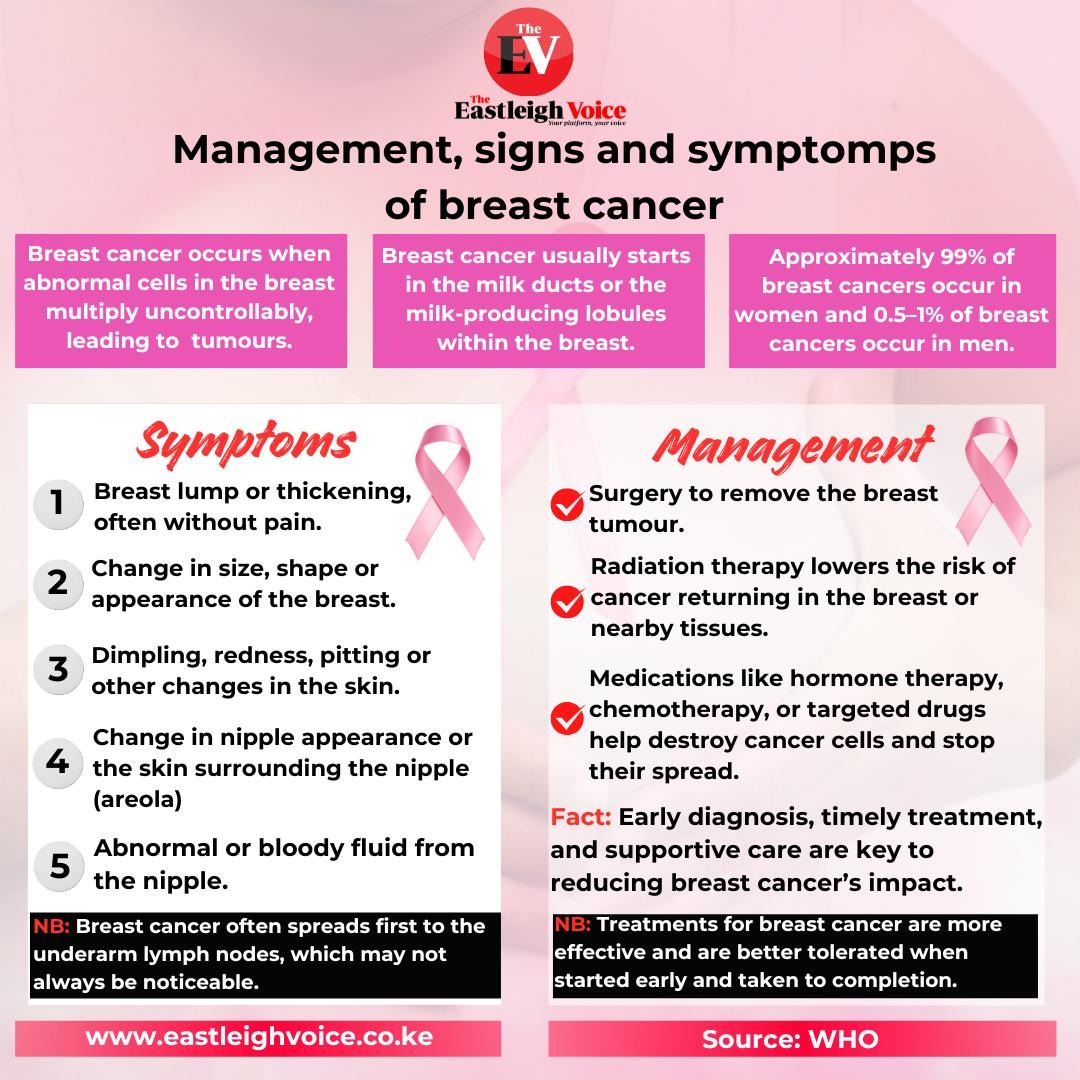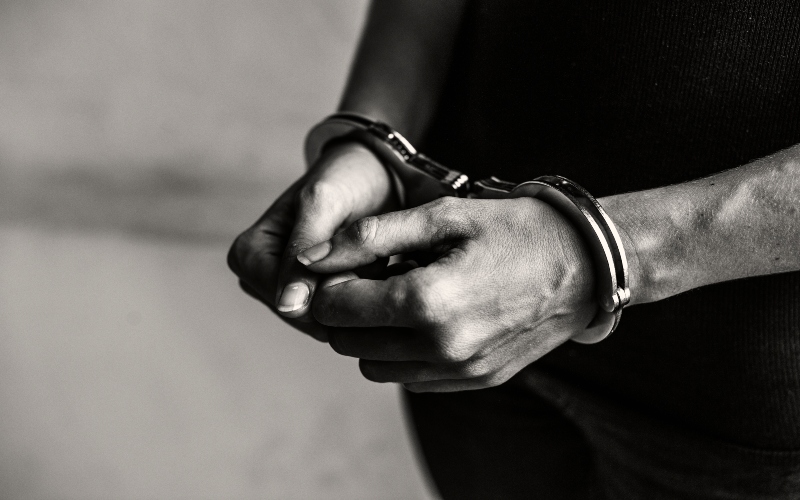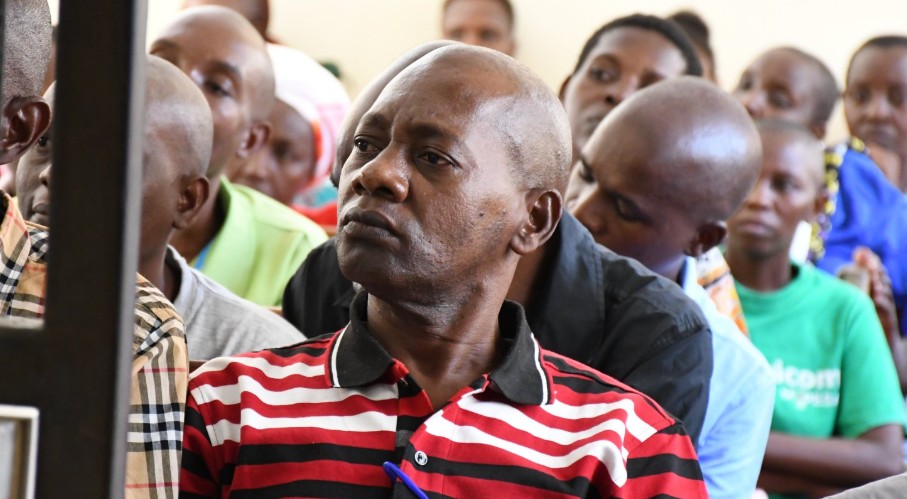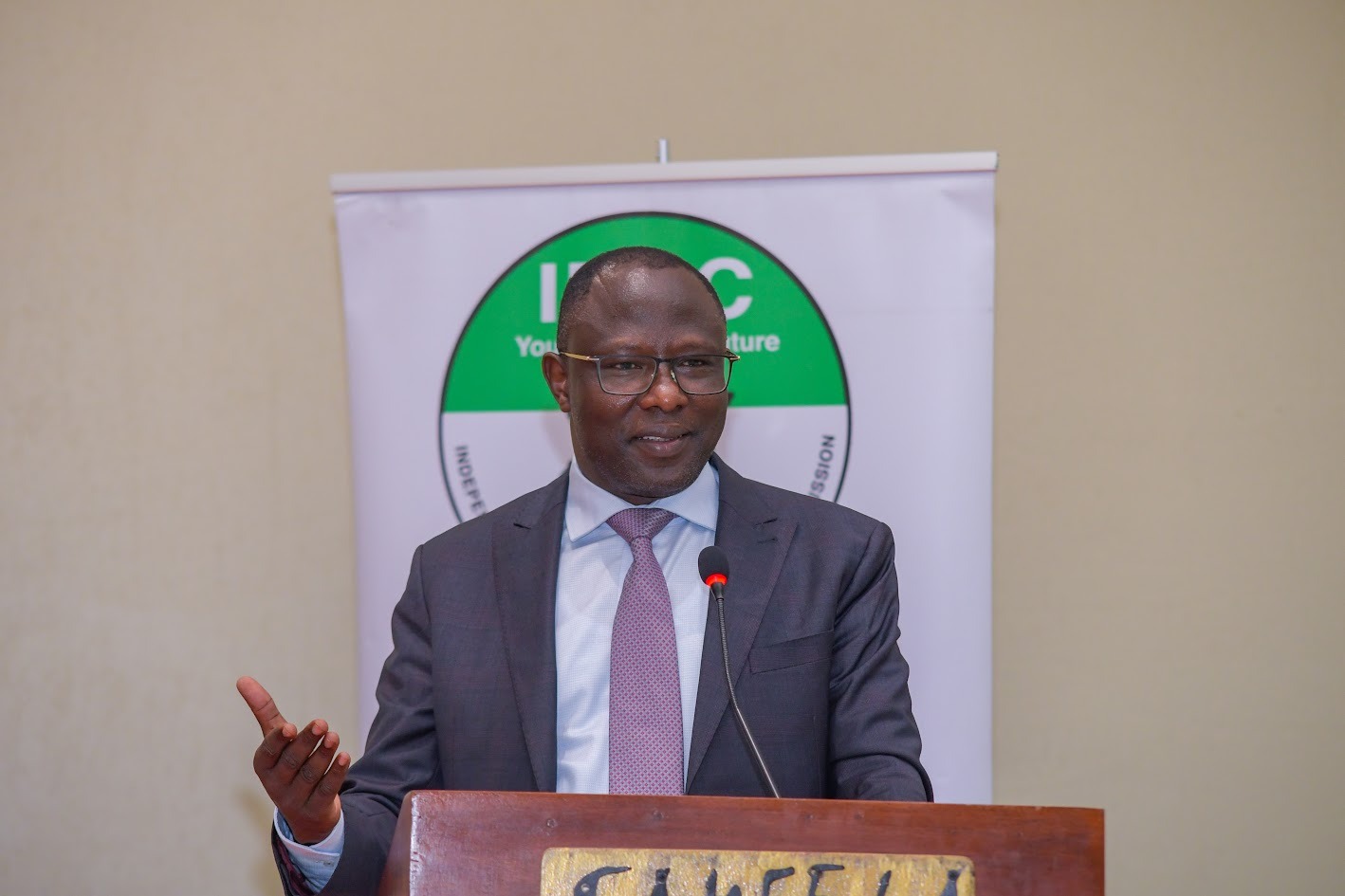Breast cancer: Warning signs and why early diagnosis saves lives

Common signs include a painless lump or thickening in the breast, changes in breast shape or skin texture, nipple changes, and unusual or bloody discharge.
Breast cancer develops when abnormal cells in the breast grow uncontrollably, forming tumours.
It usually starts in the milk ducts or lobules, which are responsible for producing milk. While it primarily affects women, about 0.5–1 per cent of cases occur in men.
More To Read
- Ruto announces increase in cancer treatment cover to Sh800,000 under SHA from December 1, 2025
- Hormonal contraceptives linked to higher breast cancer risk, study finds
- Study finds Covid-19 mRNA vaccines may boost cancer immunotherapy
- How one doctor’s breast cancer battle became a message of hope for Kenyan women
- Experts warn men are overlooking breast cancer risk
- Kamukunji’s Kinyago Kanuku hosts groundbreaking breast and cervical cancer screening
Common signs include a painless lump or thickening in the breast, changes in breast shape or skin texture, nipple changes, and unusual or bloody discharge. Detecting the disease early significantly improves treatment outcomes.
Treatment typically involves surgery to remove the tumour, radiation therapy to reduce the risk of recurrence, and medications such as hormone therapy, chemotherapy, or targeted drugs to prevent cancer from spreading. Early diagnosis and consistent treatment are crucial for recovery.
Top Stories Today













































